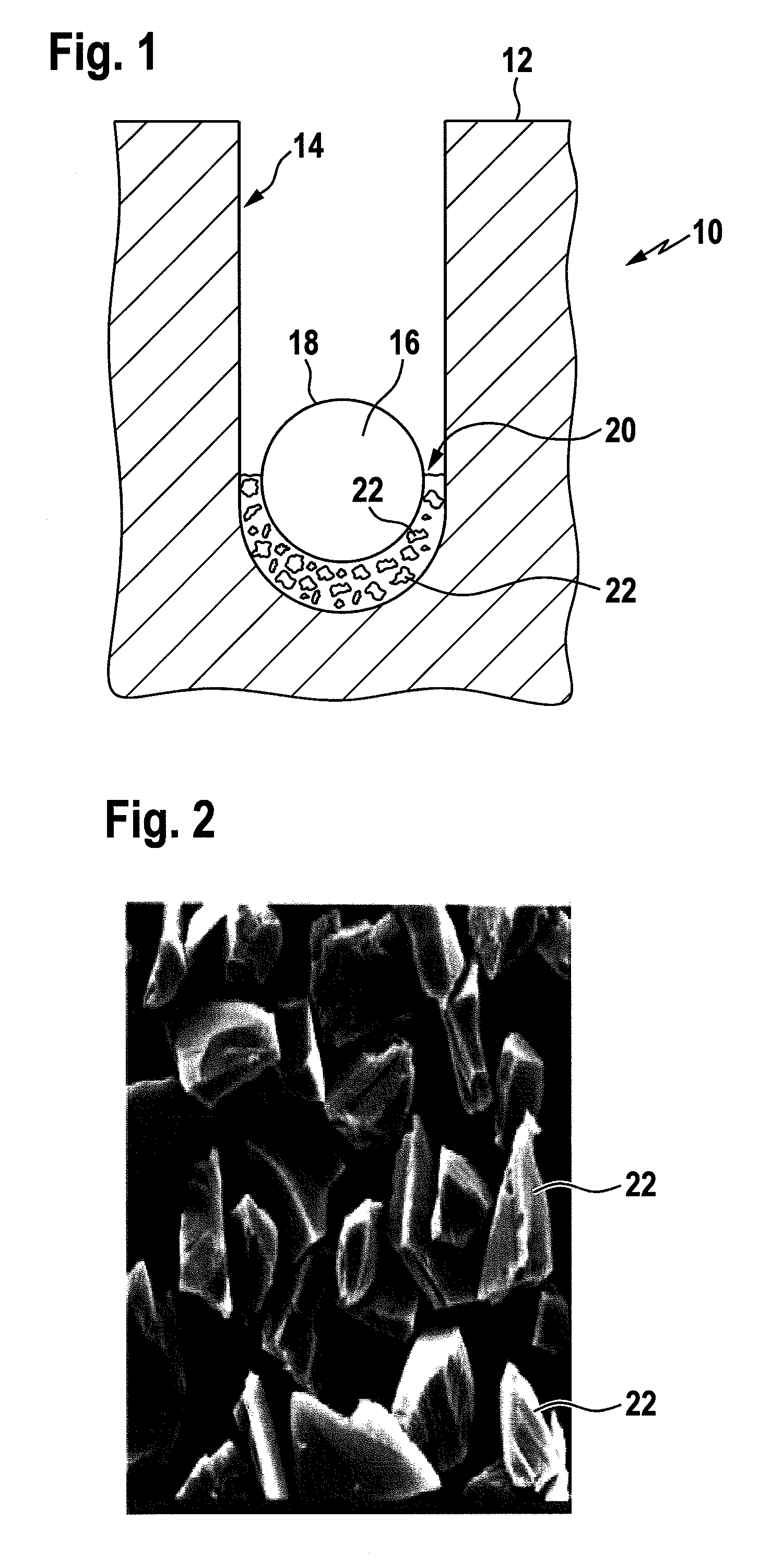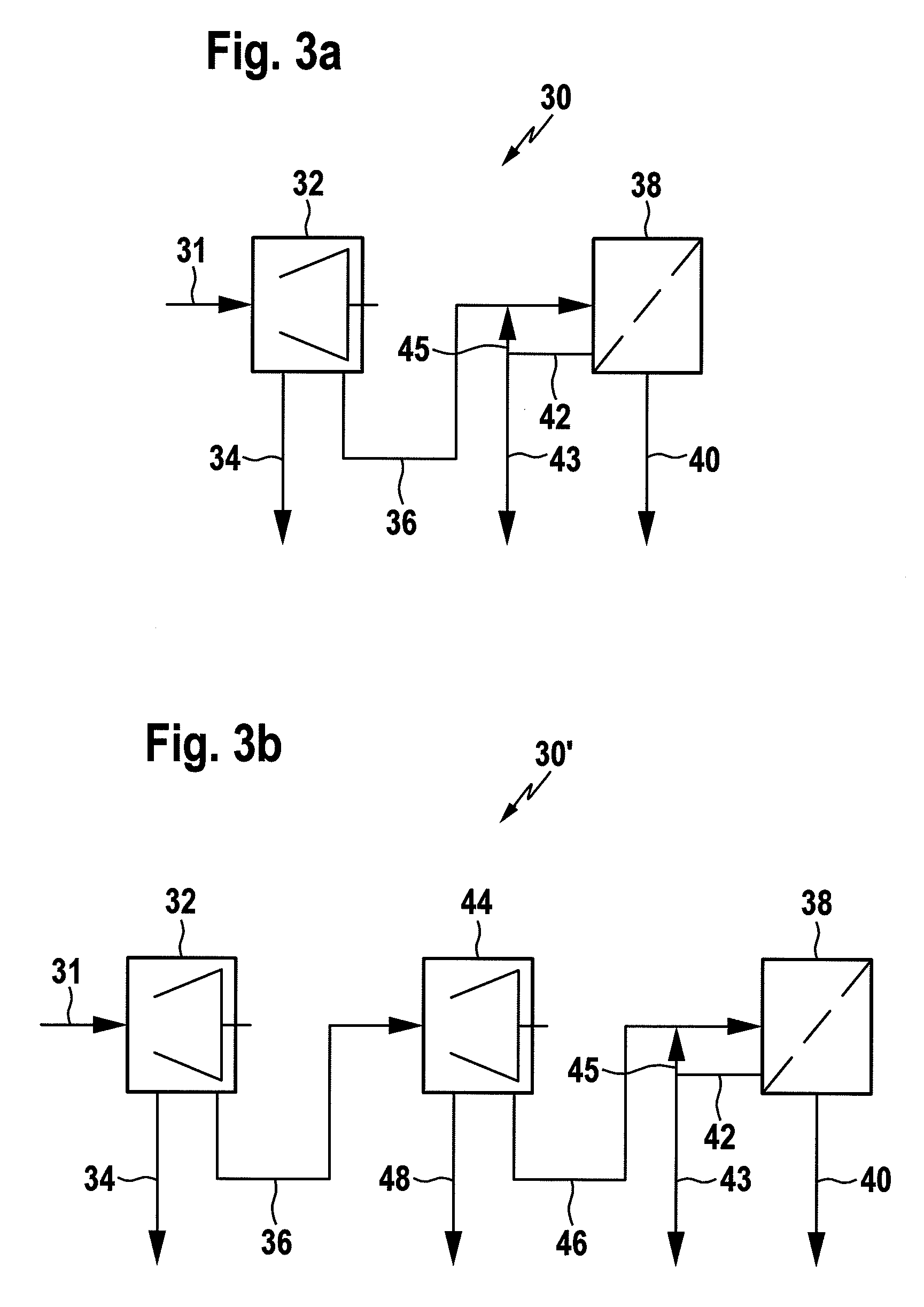Method for treating spent abrasive slurry
a technology for abrasives and slurry, which is applied in the direction of multi-stage water/sewage treatment, other chemical processes, separation processes, etc., can solve the problems of ineffective slurry, large cost, and small system which can be located and operated near the point of use to regenerate the spent slurry from a local user, etc., to achieve sufficient efficiency and reduce the viscosity , the effect of reducing the viscosity
- Summary
- Abstract
- Description
- Claims
- Application Information
AI Technical Summary
Benefits of technology
Problems solved by technology
Method used
Image
Examples
Embodiment Construction
[0038]FIG. 1 shows a cut-out of a cross-sectional representation of an ingot body 10 of, e.g., silicon which has been cut already to a certain depth starting from an outer circumference 12 to produce a kerf 14. Within kerf 14, a cutting wire 16 is positioned which has an approximately circular cross-section and a smooth outer surface 18. In the portion of kerf 14 where the cutting wire 16 contacts the ingot body 10, an abrasive slurry 20 is present to cool and lubricate the cutting tool and the substrate material of the ingot while at the same time supporting abrasion of the substrate material of ingot 10. To that effect, the abrasive slurry 20 includes besides a viscous lubricant fluid abrasive particles or grains 22 which are shown in FIG. 2 in more detail. The average size of the abrasive grains 22 shown in FIG. 2 is about 20 μm and these abrasive grains 22 work on the substrate material of ingot 10 driven in a longitudinal motion of cutting wire 16, a motion which would be perpe...
PUM
| Property | Measurement | Unit |
|---|---|---|
| temperature | aaaaa | aaaaa |
| temperature | aaaaa | aaaaa |
| sizes | aaaaa | aaaaa |
Abstract
Description
Claims
Application Information
 Login to View More
Login to View More - R&D
- Intellectual Property
- Life Sciences
- Materials
- Tech Scout
- Unparalleled Data Quality
- Higher Quality Content
- 60% Fewer Hallucinations
Browse by: Latest US Patents, China's latest patents, Technical Efficacy Thesaurus, Application Domain, Technology Topic, Popular Technical Reports.
© 2025 PatSnap. All rights reserved.Legal|Privacy policy|Modern Slavery Act Transparency Statement|Sitemap|About US| Contact US: help@patsnap.com



